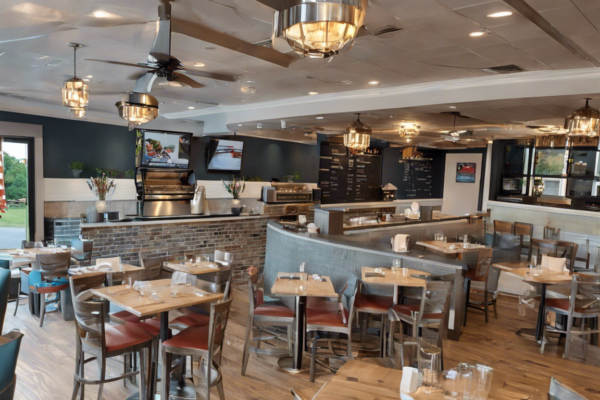Developmental Dysplasia Of The Hip
MT staining utilized a collection of stains, together with Weigert’s iron hematoxylin, 1% phosphotungstic acid answer, picro-orange, and Ponceau combination, to effectively distinguish osteoid tissue from mature mineralized bone , connective tissue , and cartilage . Immunohistochemistry was performed utilizing cementum and bone markers collagen kind I (COL-I), bone sialoprotein , and osteopontin , and alpha easy muscle actin (αSMA), a marker of vasculature as beforehand described . The survival and localization of transplanted cells was investigated by immunohistochemistry, concentrating what amino acid sequence does the following dna nucleotide sequence specify? 3′−tacagaacggta−5′ on CD44 and BrdU-expressing cells within the implant. Detailed information on all of the used antibodies is offered in Supplementary Table S1. Another goal of our study was to judge whether PDLSC-seeded scaffolds could promote bone repair when implanted in vivo.
This ligament runs up and down the leg under the knee to the ankle like a broad sheet and is known as the syndesmosis. That’s why it’s known as a “high” ankle sprain – it’s not by the foot, but higher up on the leg bones. To understand what a high ankle sprain means, first it’s necessary to define the difference between a tendon and a ligament. In order to drag a bone, the muscle transitions right into a thick rope-like construction known as a tendon that then inserts into the bone in order that the physique can transfer.
A number of case research recognized in our literature search introduced patients with distal femoral fractures due to stress riser impact from the bone tunnel or from complications related to bone tunnel graft, corresponding to tunnel osteolysis . Our case research differs from previous circumstances studies in that there was no visible cortical defect from the bone tunnel or intra-articular graft at the time of surgery, secondary to bony ingrowth and cement from the previous TKA procedure. In addition, the patient in our case research was significantly faraway from his TKA and ACL operations compared to previous studies, allowing for additional strengthening and transforming of his metaphyseal femoral bone. Because the short indirect supracondylar fracture line originated distally and transverse to the implant, we hypothesize the periprosthetic fracture in this affected person was primarily because of the stress riser effect of the ACL staple, and not sequela from the previous ACL tunnel, or from mechanical effects of his previous TKA.
Mineral deposit formation was identified by Alizarin Red (Alizarin Red S; Sigma-Aldrich, Inc.) staining. Briefly, PDLSCs, at passage three, were seeded at 8×103 per cm2 and cultured for 28 days in modified α-MEM supplemented with 10−7 M dexamethasone and 60 μM indomethacin (Sigma-Aldrich, Inc.) with media changes twice every week. Chondrogenic cell pellets were prepared from 1×106 cells at passage three, and cultured for 28 days in induction media±transforming growth factor β1 as beforehand described .
Studies in humans and rodents report an age related decline in cutaneous wound repair , , suggesting age contributes to dysregulated tissue restore. Our knowledge of decreased FPR2/ALX along with the elevated PGE2 ranges with age suggests an inflamm-aging course of is current in injured tendons. In support of this idea, IL-1β stimulated tendon explants derived from uninjured horses aged 10 years and above confirmed a diminished capability to precise FPR2/ALX compared to individuals lower than 10 years of age.
The density of Ki‐67‐positive cells as a surrogate marker of proliferative activity was analysed to have the ability to consider any potential difference between the teams. The capability of MSCs for long-term survival and take part in tissue regeneration following transplantation in vivo relies on numerous factors including their capability to endure self-renewal. The capability to reconstitute the identical compartment of phenotypically defined progenitor cells has been demonstrated for bone-marrow-derived skeletal progenitors, with the flexibility to determine a hematopoietic bone marrow microenvironment over serial ectopic transplants in vivo . Further, dental pulp stem cells have also been proven to exhibit a capability to bear self-renewal as assessed by their capability to regenerate dentin-pulp-like complexes over serial transplantations in vivo .
The management of human mesenchymal cell differentiation utilizing nanoscale symmetry and disorder. Evaluation of bone regeneration, angiogenesis, and hydroxyapatite conversion in critical-sized rat calvarial defects implanted with bioactive glass scaffolds. Real-time PCR evaluation of BSP, OPN and OCN mRNA expression in PDLSCs on two scaffolds. Cell viability was decided using the tetrazolium salt MTT (3-[4, 5-dimethylthiazol-2-y1]-2, 5-diphenyltetrazolium bromide) assay. Next, 5 × 104 of PDLSCs were seeded into every scaffold in 24-well plastic culture plates and incubated for 1, three, 7, and 14 days. Specimens were then gently rinsed with phosphate-buffered solution and transferred into new 24-well tradition plates.






